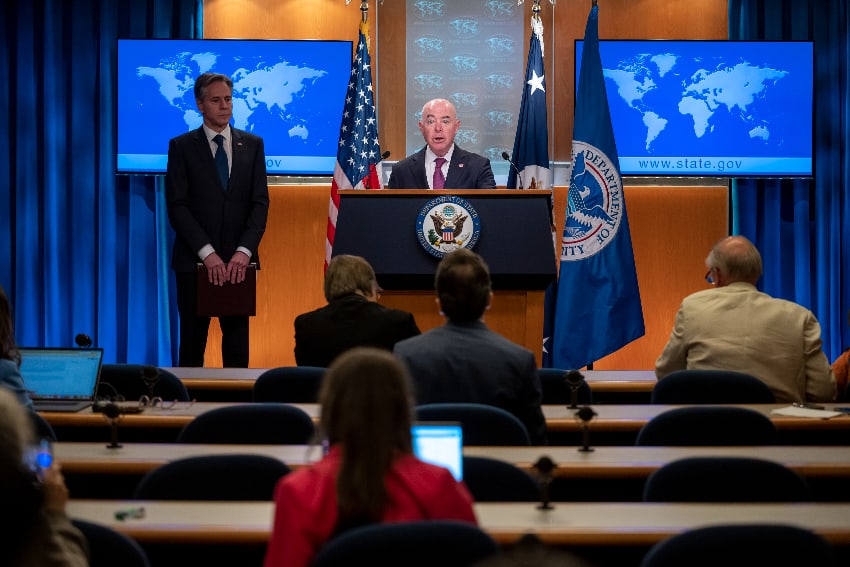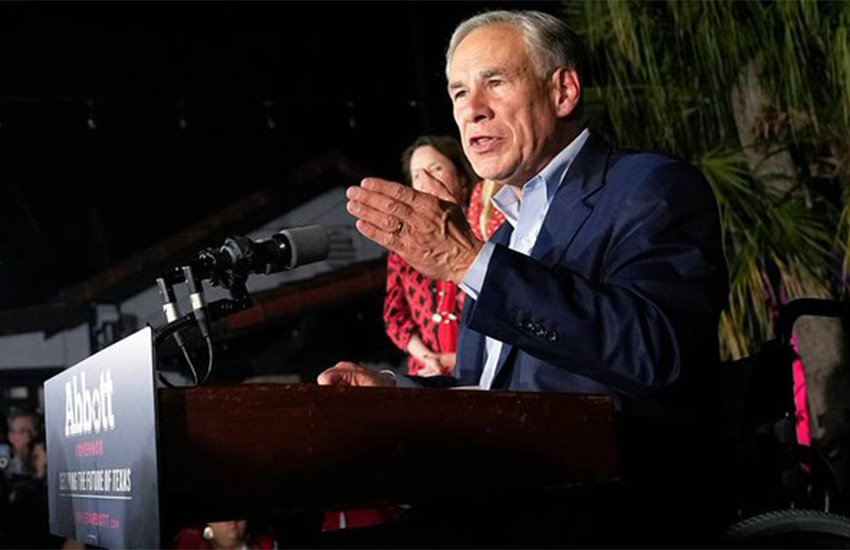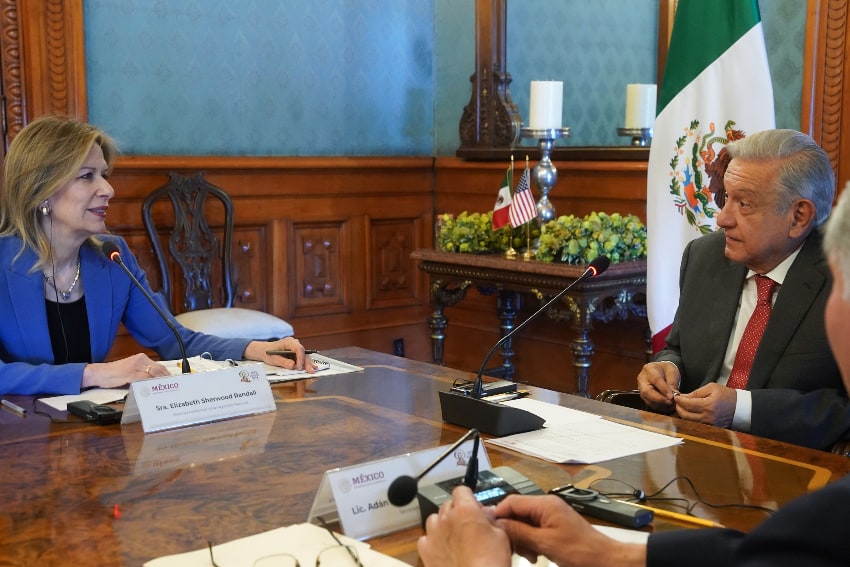The United States government will send 1,500 members of the military to the U.S.-Mexico border next week ahead of the expiration of a COVID-related border control.
Large numbers of migrants are expected to attempt to cross into the United States over its southern border following the May 11 lifting of Title 42, a pandemic-era provision that allows asylum seekers in the U.S. to be immediately expelled to Mexico, without recourse to legal hearings, due to the threat to public health they allegedly pose.

The United States Department of Defense (DoD) said in a statement Tuesday that Defense Secretary Lloyd Austin had approved a temporary increase of 1,500 military personnel to “supplement U.S. Customs and Border Protection (CBP) efforts on the U.S. southwest border,” where 2,500 U.S. National Guard members are already deployed.
The approval was issued in response to a request from the Department of Homeland Security, which oversees CBP.
“For 90 days, these 1,500 military personnel will fill critical capability gaps, such as ground-based detection and monitoring, data entry, and warehouse support, until CBP can address these needs through contracted support,” the DoD said.
“Military personnel will not directly participate in law enforcement activities. This deployment to the border is consistent with other forms of military support to DHS over many years.”

White House spokeswoman Karine Jean-Pierre also stressed that the troops would not perform “law enforcement functions” or interact with migrants. The deployment of the soldiers and marines will “free up Border Patrol agents to perform their critical law enforcement duties,” she told a press conference Tuesday.
The plan comes as some Republican Party figures continue to blame President Joe Biden and his administration for what they see as a “crisis” on the United States’ border with Mexico.
Texas Governor Greg Abbott, one of the most prominent critics, this week advised Chicago Mayor Lori Lightfoot to “call on … Biden to secure the border in response to her request that Texas stop transporting migrants to her self-declared sanctuary city.”
The decision to deploy additional troops to the border, the Associated Press reported, signals that the Biden administration is “taking seriously an effort to tamp down the number of illegal crossings, a potent source of Republican attacks, and sends a message to potential border crossers not to attempt the journey.”

However, it “also draws potentially unwelcome comparisons to Biden’s Republican predecessor, whose policies Biden frequently criticized,” AP added.
A record number of migrants crossed into the United States via Mexico in the 2022 U.S. fiscal year, even as the Title 42 provision was in effect.
The announcement of the deployment of additional troops to the border, which is slated to take place by next Wednesday, came after the United States government said last week that it would aim to quickly screen migrants seeking asylum in the U.S., promptly deport those who don’t qualify and penalize those who enter the U.S. illegally or pass through another country illegally on their way to the U.S. border.
After crossing into the country from Guatemala, many migrants travel through Mexico to the U.S. border without obtaining any documents from Mexican immigration authorities.
However, the federal government has sought to crack down on the practice, deploying both immigration agents and National Guard troops to detain undocumented migrants, many of whom come from a handful of Western Hemisphere countries. The United States announced a program in January that opens up new pathways to the U.S. for Venezuelans, Nicaraguans, Cubans and Haitians while seeking to deter migrants migrants of those nationalities entering the U.S. illegally or applying for asylum after traveling to the border via Mexico.
President López Obrador stressed Tuesday that the United States is an “independent” and “sovereign” country and thus was within its rights to send 1,500 troops to the border.
“They take these [kinds of] decisions and we respect them,” he told reporters.
The United States’ announcement of the deployment came the same day as López Obrador met with U.S. Homeland Security Advisor Elizabeth Sherwood-Randall to discuss migration and other issues of mutual interest.
The two countries subsequently released a joint statement “announcing a set of additional measures to address the humanitarian situation caused by unprecedented migration flows at our shared border and in the region.”

Mexico and the United States pledged to “increase joint actions to counter-human smugglers and traffickers that are exploiting migrants” and “to continue to enhance their efforts in Central America to address the root causes of migration and expand legal pathways.”
They also recognized “the great potential value of the regional processing centers that the United States announced last week, and discussed how Mexico can contribute to their effectiveness”; committed to continue a “successful joint initiative” that “combines expanded legal pathways with consequences for irregular migration; and affirmed their commitment to modernizing their shared border, which measures over 3,000 kilometers between Matamoros, Tamaulipas, and Tijuana, Baja California on the Mexican side.
With reports from AP and Al Jazeera
